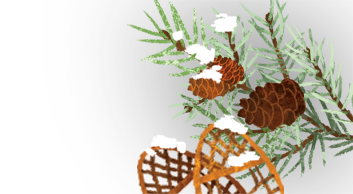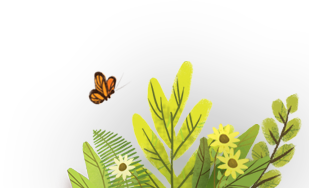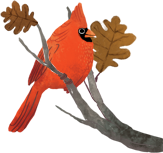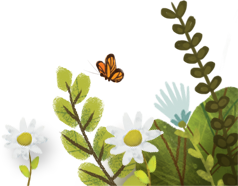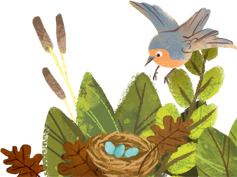- A portion of the class will be outside, so participants should dress accordingly.
- In case of inclement weather, alternate activities will be held inside.
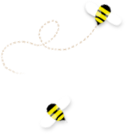
What Is A Scientist?
| Title | What Is A Scientist? |
| Audience | Kindergarten |
| Offered | October - November |
| Length | 1 hr. 25minutes (look-around time in the Exploration Hall included) |
Preparing for this Class
Class Description
Who scientists are and what scientists do are highlighted during this Quarry Hill visit. Students will practice making observations, a basic science skill. Next Sammy the Scientist (a squirrel puppet) will interact with students and help them focus on the scientific method: making observations (including measuring), asking questions, doing experiments, and research. Students will then move outside and rotate through two activities:
- Basswood Tree Visit - Students will observe a nearby Basswood tree, focusing on its shape, bark color and texture. They will more closely study its leaves using a ruler and magnifier as they observe a laminated basswood leaf.
- Unnatural Trail Hike - This hike is an exercise in observing, remembering and describing. Students will use their sense of sight to silently search for various un-natural/man-made familiar objects that Quarry Hill staff have placed along a trail. Students will finish their hike by trying to remember and describe the objects they saw (sizes, shapes, colors and object’s name if possible). Clues will be given when necessary. The class will work as a team to remember and describe as many of the objects as possible. A twin set of the objects will be available to confirm kids’ descriptions
Correlation to MN Science Standards
- Use observations to develop an accurate description of a natural phenomenon and compare one's observations and descriptions with those of others. (0.1.1.2.1)
- Sort objects into two groups: those that are found in nature and those that are human made. (0.1.2.1.1)
- Sort objects in terms of color, size, shape, and texture, and communicate reasoning for the sorting system. (0.2.1.1.1)
- Differentiate between living and nonliving things. (0.4.1.1.3)
- Observe a natural system or its model, and identify living and nonliving components in that system. For example: A wetland, prairie, garden or aquarium. (0.4.2.1.1)
- Recognize that tools are used by people, including scientists and engineers, to gather information and solve problems. (1.1.3.2.1)
Science Vocabulary
|
scientist experiment color |
science experimenting plant |
observation measure size |
observing *natural *unnatural |
*denotes a Quarry Hill vocabulary word
Classroom Extension
- Classroom Extensions
- Read the book What is a Scientist? By Barbara Lehn
- Create your own un-natural trail in your school yard to practice observation skills.
- Collect leaves in your school yard and practice making observations, using the 5 senses.



